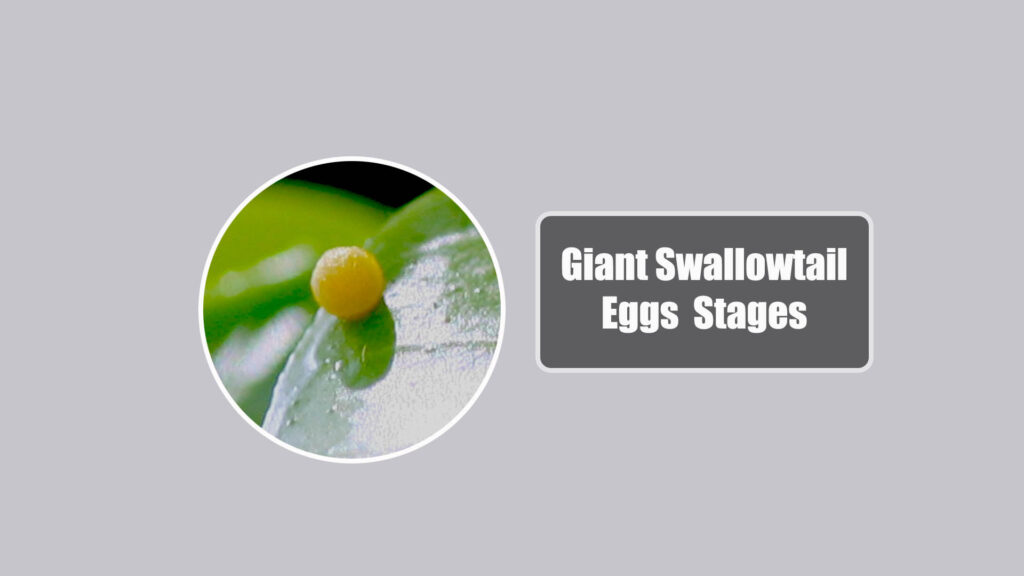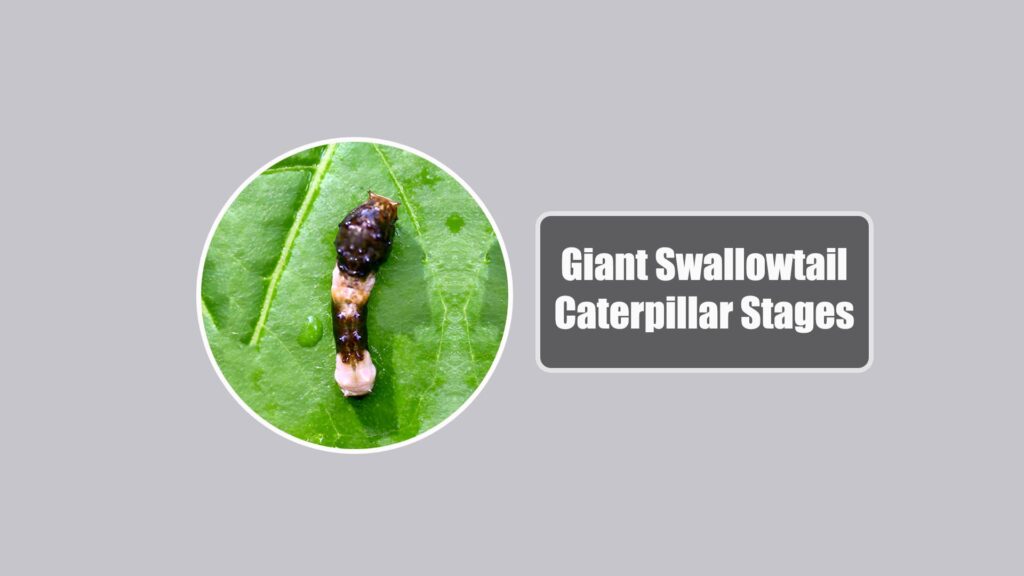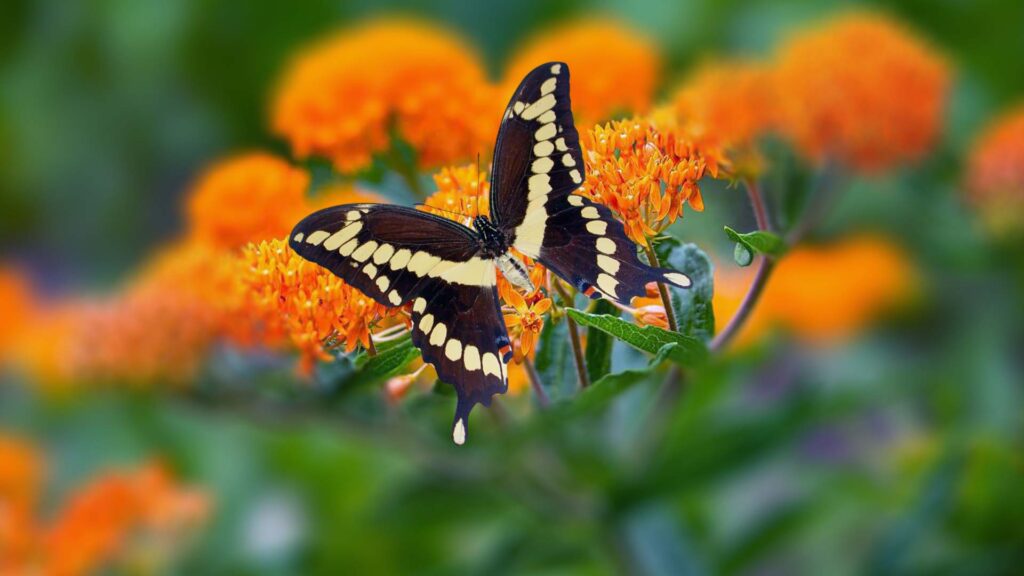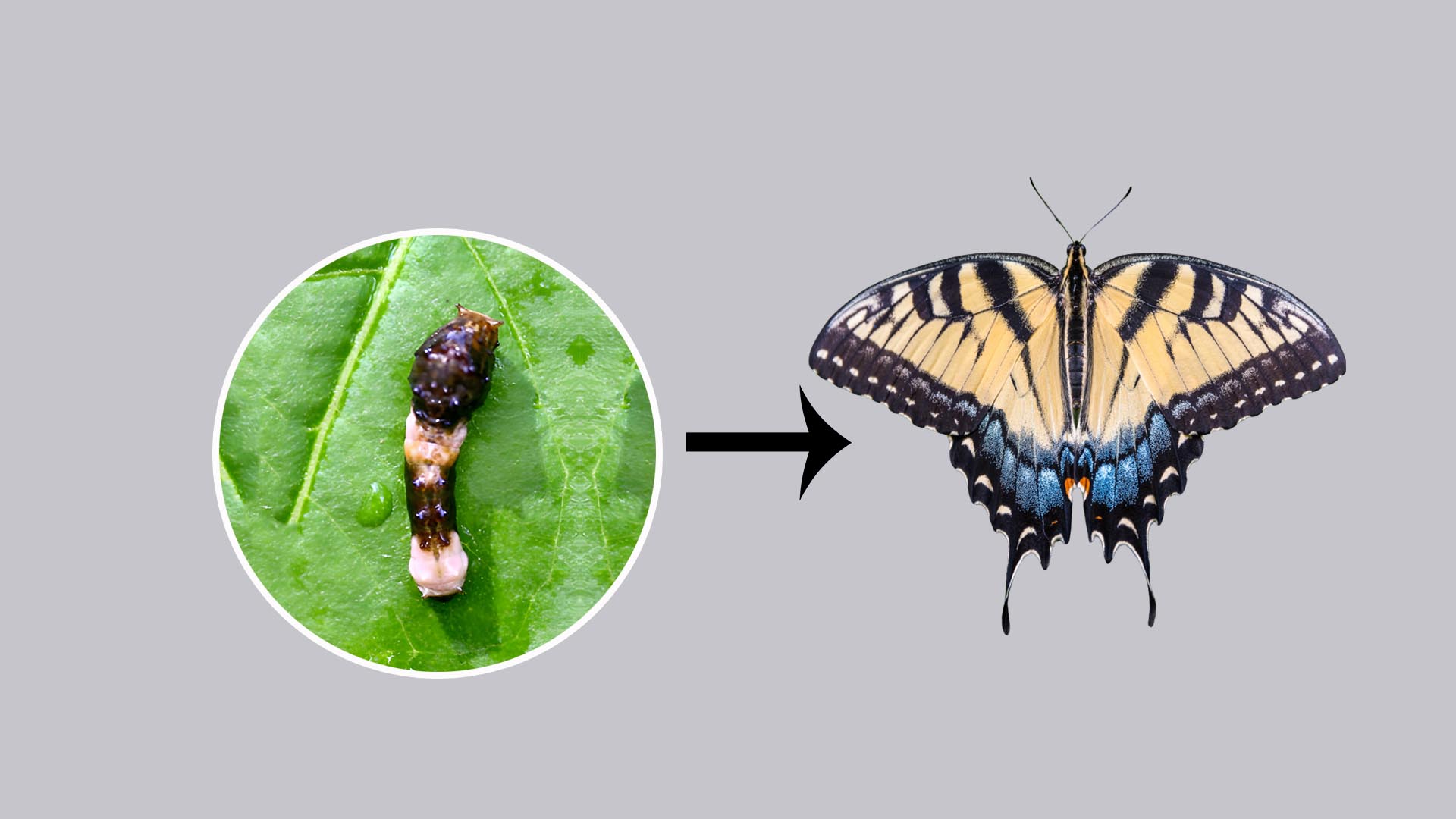The enchanting world of butterflies captivates the imagination with its vibrant colors and graceful fluttering. Among these captivating creatures is the Giant Swallowtail Butterfly. This majestic species is known for its distinctively large size and striking appearance.
However, You may want to know about the Giant Swallowtail Butterfly’s life cycle and its different stages including caterpillar stages. Here we will discuss everything about the Giant Swallowtail butterfly.
Giant Swallowtail Butterfly Life Cycle
The Giant Swallowtail Butterfly undergoes a captivating life cycle. beginning with the delicate egg stage, followed by the voracious larval phase as a caterpillar. It then transforms within a chrysalis during the pupal stage, culminating in the emergence of a stunning adult butterfly. This remarkable metamorphosis adds to the butterfly’s allure.
Mainly they complete their life cycle in four stages: Egg stage, larval stage, caterpillar stage, and adult stage.
Giant Swallowtail Eggs Stage

The journey of the Giant Swallowtail begins with the fascinating egg stage. The female butterfly carefully selects suitable host plants to lay her eggs. It ensures a safe and conducive environment for the upcoming larvae. These eggs are tiny and inconspicuous. The egg holds the promise of life and transformation. Giant Swallowtail Butterfly eggs are pale yellow in color, resembling tiny, elongated spheres.
The duration of the Giant Swallowtail Butterfly’s egg stage typically ranges from 5 to 10 days. The time duration depends on environmental conditions such as temperature and humidity. During this time, the eggs undergo subtle changes before hatching, marking the commencement of the fascinating larval stage in their life cycle.
Giant Swallowtail Larval Stage
Upon hatching, the Giant Swallowtail enters the larval stage where it takes the form of a caterpillar. The larval stage is a period of rapid growth and voracious feeding.
This dynamic phase sets the stage for the caterpillar’s eventual transformation into the pupal stage. It is an essential chapter in the butterfly’s captivating life cycle.
Giant Swallowtail Caterpillar Stage

The caterpillar stage is a critical phase in the life cycle, marked by distinct changes in the Giant Swallowtail’s physical appearance. The duration of the Giant Swallowtail Butterfly’s caterpillar stage varies. Typically spanning two to four weeks.
As it feasts on host plants, notably citrus trees, the caterpillar exhibits unique defensive behaviors, including emitting an orange-scented osmeterium to deter predators. Giant Swallowtail caterpillars are known for their specialized diet. They primarily feed on the leaves of host plants, with citrus trees being a notable favorite.
This phase is crucial for growth. Preparing the caterpillar for the subsequent pupal stage. Witnessing the caterpillar’s evolving appearance and adaptive strategies provides a glimpse into the marvels of nature’s design in the butterfly’s fascinating life cycle.
Giant Swallowtail Pupal Stage
The Giant Swallowtail Butterfly’s pupal stage, marked by its time within the chrysalis, generally lasts around 10 to 12 days. As the caterpillar completes its growth it undergoes a remarkable transformation into a pup and it is encapsulated in a chrysalis. This stage is a period of dormancy and internal restructuring. In this stage are preparing the butterfly for its final emergence.
Metamorphosis
Metamorphosis is a magical process that unfolds within the chrysalis, leading to the emergence of the adult Giant Swallowtail Butterfly. This section explores the physiological changes that occur during metamorphosis, highlighting the significance of this transformative journey.
Giant Swallowtail Adult Stage

The Giant Swallowtail Butterfly’s adult stage is a culmination of its captivating life cycle. The duration of this stage typically ranges from two to four weeks. However environmental factors and conditions can influence its lifespan.
The process of the adult stage involves the emergence of the mature butterfly from the chrysalis. In this stage, the butterfly unfolds its wings.
This period is crucial for the wings to attain their full size and strength. Subsequently, the adult Giant Swallowtail engages in activities such as feeding on nectar, reproducing, and contributing to pollination within its ecosystem. The adult stage represents the pinnacle of the butterfly’s transformative journey, showcasing its vibrant colors and graceful flight.
Giant Swallowtail butterfly growth size by age
| Age (Days) | Giant Swallowtail Butterfly Size (Approximate) |
| 1-5 | Tiny, Newly Hatched from Egg |
| 5-10 | Small Caterpillar with Distinct Markings |
| 10-15 | Larger Caterpillar, Noticeable Growth |
| 15-20 | Further Growth, Patterns and Colors Emerge |
| 20-30 | Mature Caterpillar, Prepares for Pupation |
| Pupal Stage | Chrysalis Formed, Caterpillar Encased |
| Adult | Full-grown Butterfly, Wings Unfolded |
Giant Swallowtail Butterfly in African and Florida
The Giant Swallowtail Butterfly holds a unique presence in both African and Florida ecosystems, each contributing to the species’ diverse experiences and adaptations.
Giant Swallowtail in African Ecosystem: In Africa, the butterfly thrives in varied habitats, from savannas to forests. It often finds its home among citrus groves, where the larvae feed on citrus trees. The butterfly’s interactions with African flora and fauna contribute to the intricate balance of the continent’s biodiversity.
Giant Swallowtail in Florida Ecosystem: Florida provides a distinct environment for the Giant Swallowtail. The species is known to inhabit subtropical and tropical regions, including the diverse landscapes of Florida. The warm climate and abundance of host plants make Florida an ideal habitat. Citrus trees, prevalent in the region, serve as crucial hosts for the caterpillars.
Adaptations in Different Environments: While the fundamental life cycle remains consistent, regional variations may influence the butterfly’s behavior, appearance, and interactions with local flora. Factors such as temperature, humidity, and the availability of host plants can contribute to unique adaptations in these diverse ecosystems.
FAQ
How long do swallowtail butterflies live?
Swallowtail butterflies typically live for about 2 weeks to a month, although the exact lifespan can vary among species.
What color is a swallowtail chrysalis?
The color of a swallowtail chrysalis varies depending on the species, but it is often green or brown to blend in with the surroundings.
What to do if a swallowtail chrysalis falls?
If a swallowtail chrysalis falls, try to gently reattach it to a secure surface using a silk thread or glue. Handle it with care to avoid damaging the delicate structure.
Are swallowtail chrysalis green or brown?
Swallowtail chrysalises can be either green or brown, depending on the species. This coloration helps them camouflage and avoid predators.
How long do giant swallowtails stay in chrysalis?
Giant swallowtails typically spend about 10 to 12 days in the chrysalis stage before emerging as adult butterflies.


